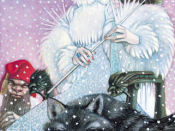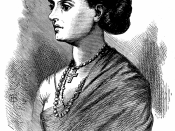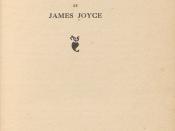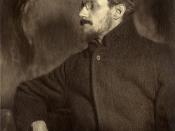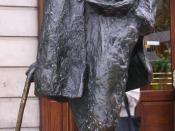"The Sisters" and "An Encounter" are stories written by James Joyce in a book called Dubliners. "The Sisters" is the first chapter of the book, follows by the second chapter, "An Encounter." In both chapters, the first person narrator is a boy. No where in this two chapters indicates directly that the boy narrating chapter one and two is the same boy, but there are enough evidences to convince us to believe so. These evidences are the similarities in the boy's character. This paper will discuss the comparison of the narrator's age, his smartness, his observant behavior, and his imagination in "The Sisters" and "An Encounter." In "The Sisters", we receive the hint about the age of the narrator when old Cotter talks about how he would not want his child to have to have too much to say to the priest.
He said his idea is to "let a 'young lad' run about and play with young lads⦠(P.2)" The word 'young lad' here refers to the narrator. From this we know that the narrator must me a young boy, but still we don't know a specific age. In "An Encounter", we found that the narrator is attending a school. When the teacher was yelling at the narrator and his friends after finding that they have been reading something inappropriate, he refers to the students as "boys like you." An another similarity between the boy in chapter one and two is that he seems to have no parents. In both chapters, the mother and father of the narrator have never been mentioned. Only his aunt and uncle were spoken of.
The narrator in chapter one and two has another similarity, which is the level of smartness. We can notice that the boy in both chapters is very smart. In "The Sisters," the boy is smart enough to notice when the old cotter tells him about the death of the priest that he is being observed. Therefore he does not look up from his plate. After being told the news, he does not believe it until he sees the card pinned on the crape himself. In "An Encounter", he plans out about his trip very carefully before hand. He finds the way for himself and his friends to be excuse from school so they will not be in trouble after. Mahony's big sister writes an excuse for him and Leo Dillon tells his brother to say that he was sick. At the beginning of the adventure the narrator hides his books in the long grass so nobody comes near therefore no one will find out that he skips school.
The boy in both chapters has a very observant characteristic. He always notices and remembers things in small detail which young kids his age might not do so. In the beginning of "The Sisters", he says "Night after night I had passed the house and studied the lighted square of window: and night after night I had found it lighted in the same way (p.1)." He does not let things around himself just pass by, he studies them. After the boy believe that the priest is dead, he imagines that if the priest is still alive he would have gone into the little dark room behind the shop to find the priest sitting there. At this point he describe the way the priest would look like in every little details, such as how the priest hands always tremble, how the clothes would look like, what activity would they be doing, and etc. He remembers when the priest smiles, he "used to uncover his big discolored teeth and let his tongue lie upon his lower lip (p.5)." Also at the house of mourning when he was praying, the boy notices about the old woman "how clumsily her skirt was hooked at the back and how the heels of her cloth boots were trodden down all to one side (p.6)." In "An Encounter", the boy spends time examining the foreign sailors eye colors. He picks up that the sailor's eyes were blue and gray and even black. He picks up that "The only sailors whose eyes could have been called green was a tall man who⦠(P.15)." Eye color is something young kids does not care enough to closely observe. Also when the stranger approach him at the field when he was resting with Mahony, he picks up in the smile of the stranger that "he had great gaps in his mouth between his yellow teeth (p.17)." From reading the two chapters we can see that the narrator is a boy with imagination. In the first chapter as he notices how clumsily the old lady's skirt was hooked at the back and how the heels of her clothes boots were trodden down all to one side. He fancies that "the old priest is smiling as he lay there in his coffin (p.6)." In "An Encounter", his imagination is what starts the whole story. His curiosity about the outside world and how it would be like be sneak out of school leads him to decide to have this adventure.
The discussions above show that there are a lot of similarities in the narrator of "The Sisters" and "An Encounter", enough to lead us to believe that the two is the same character.
